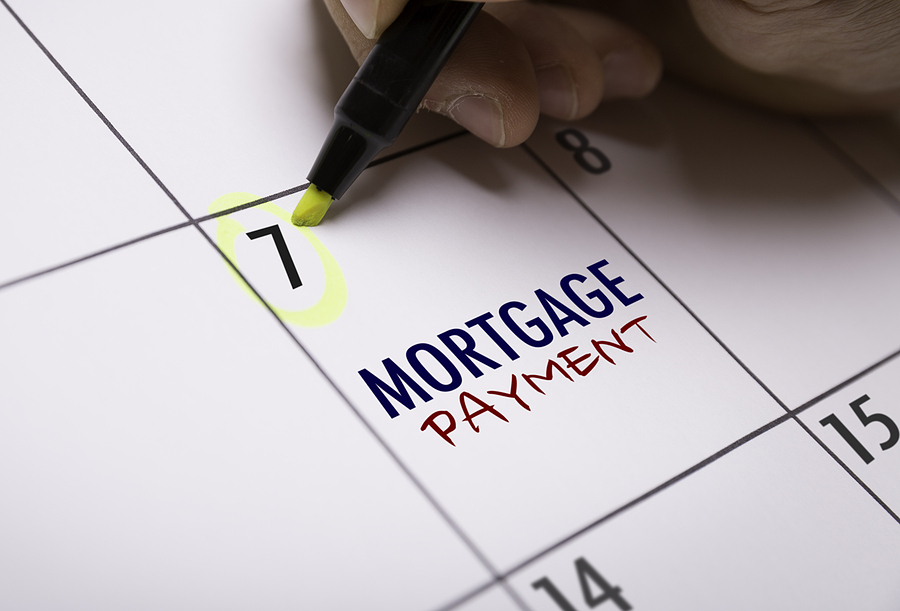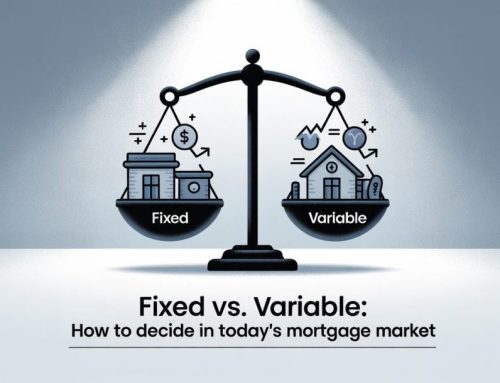There are many choices involved with setting up your mortgage, which can make selecting the right mortgage an overwhelming process.
Do you go to a bank or a broker?
Who is the best lender with the lowest mortgage rate?
Should you go with a 25 year or 30 year amortization?
Do you choose a fixed or a variable rate mortgage?
Choosing the mortgage payment frequency is generally the last choice made before your file gets submitted off to a lender for review. Some lenders will automatically issue their approvals with monthly payments by default, giving you the choice to select your payment frequency at the time you sign the documents. Others may issue approvals with your desired frequency from the beginning. Either way, the choice is yours!
There are six different payment frequency options:
- Weekly
- Accelerated weekly
- Biweekly
- Accelerated biweekly
- Semi-monthly
- Monthly
Monthly
Monthly payments are the easiest to comprehend. As the name implies, you’ll have just a single mortgage payment, which will fall on the same date each month. (If your payment happens to be on the 31st, then it will fall on the last day of each month with less than 31 days).
Semi-monthly
With semi-monthly payments, you’ll be making two mortgage payments per month for a total of 24 payments per year. The payment amount is roughly your monthly payment divided in half, and then made twice per month. Semi-monthly can sometimes be confused with biweekly, however there is a big difference, as I’ll explain.
Biweekly
Biweekly payments are made every two weeks, which can sound like another way of saying twice per month, however there is an important difference. Semi-monthly payments will occur 15 days apart. Biweekly payments will be made 14 days apart. While this doesn’t sound like a big difference, semi–monthly payments will have a total of 24 payments each year, while biweekly will have 26. That’s two additional mortgage payments per year. This doesn’t mean that you’ll be paying more, as the amount of each biweekly payment will be lower than the semi-monthly option. Biweekly payments are calculated by multiplying your monthly payment by 12 and then dividing it by 26. In other words, if your monthly payment is $1,000, then your biweekly payment will be $461.54 ($1,000 x 12 / 26).
Weekly
While biweekly payments are made every two weeks, weekly payments are made once per week. The calculation is similar to biweekly, except instead of dividing the annual total monthly payments by 26, you’ll divide them by 52. This results in exactly half the biweekly payment, which you’ll then make on the same day each week.
Accelerated biweekly
Accelerated biweekly payments are calculated simply by dividing your monthly payment in half, which is then paid every two weeks. Both biweekly options have a total of 26 payments each year, however the accelerated payment will be a little higher.
Accelerated weekly
Instead of dividing your monthly payment in half as you would with accelerated biweekly payments, the accelerated weekly payment is your monthly payment divided by four, which is then made every week. Again, the accelerated payment will be a little higher than the non-accelerated version. Both weekly and accelerated weekly payments will have a total of 52 payments per year.
What is the benefit of accelerated mortgage payments?
Accelerated payments will be a little higher than the non-accelerated options, which is how they are beneficial. I’ll explain further. By simply accelerating your payments, you’ll be making the equivalent of roughly one additional monthly payment per year, which is applied 100% towards your principal. This alone will knock a 25 year amortization down to approximately 22 years, 9 months*, which is why accelerated payments are so popular. You’re immediately slashing 2 years 3 months off your mortgage.
There is negligible benefit to accelerated weekly vs. accelerated biweekly. On a $500,000 mortgage at 1.59% amortized over 25 years, you’d save only $22.15 over the FULL 25 year amortization by choosing accelerated weekly over accelerated biweekly payments. Less than $1 per year.
Let’s take a look at how the payments will vary for each payment frequency on a $500,000 mortgage at 1.59% amortized over 25 years:
| FREQUENCY | MONTHLY PAYMENT | # OF PAYMENTS | TOTAL ANNUAL PAYMENTS | EFFECTIVE AMORTIZATION |
| Monthly | $2,019.65 | 12 | $24,235.80 | 25 years |
| Semi-Monthly | $1,009.49 | 24 | $24,227.76 | 25 years |
| Biweekly | $931.82 | 26 | $24,227.32 | 25 years |
| Accelerated Biweekly | $1,009.83 | 26 | $26,255.58 | 22 years 9 months |
| Weekly | $465.84 | 52 | $24,223.68 | 25 years |
| Accelerated Weekly | $504.81 | 52 | $26,250.12 | 22 years 9 months |
Which Payment Frequency Is Right For You?
It’s really just personal preference for the most part. The most common payment frequency is accelerated biweekly. Usually when people refer to biweekly, it’s the accelerated payment they are referring to. Some prefer to have only a single payment per month, while others prefer a smaller payment made more frequently. Some may prefer to have their mortgage payments line up with their paycheques. If they are paid biweekly, then they may want their mortgage payments to match. The same logic applies for weekly of course.
If you want to pay your mortgage off faster, but prefer to have only a single payment per month, then you can simply increase your payments using your pre-payment privileges. All mortgage lenders offer them. You can see the power of making accelerated payments. Imagine how much faster you would get your mortgage paid off if you increased the payments even further?
If you are unsure which payment frequency is right for you, then I suggest starting off with monthly payments. You can change your payment frequency at any time during the term of your mortgage, usually at no cost to you.
*The exact effective amortization resulting from accelerated payments will vary slightly depending on interest rate.








Leave A Comment